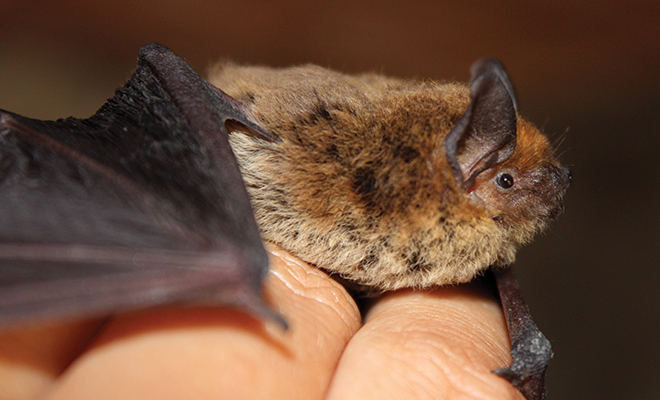
Wait, What? A Bat Burrito?
They’re one of the most fascinating videos on YouTube. Wildlife rehabilitators nurture baby bats, most often fruit bats, that are found indoors or outdoors. If a bat mother dies, the young may
still be attached and are often dehydrated when they reach the rehabilitation center.
Bats have been maligned almost as long as humans have been on earth, viewed as pests, spreaders of disease and bloodsuckers. Nothing could be farther from the truth. Bats are a keystone species and, surprisingly, about one of every four mammals on earth is a bat. They’re a member of the order Chiroptera, from the Greek words for hand and wing.
Protecting pollinators in our warming atmosphere is a priority for wildlife scientists, and bats are one of the most prolific. They pollinate or disperse the seeds of plants and trees—including eucalyptus, balsa wood, avocado, date, fig and mango—and spread millions of seeds every year from the ripe fruit they eat. For example, each year my yard (it’s not a garden; it’s too uncultivated), from June through first frost, is covered with rampant cherry tomato plants. I’ve held the birds responsible for this unchecked growth, but it could just as easily be the bats roosting in the massive trees in the neighborhood. And although it’s not an exact comparison, like argan oil that’s produced in the traditional manner from fruits digested by goats, some seeds won’t germinate until they pass through the digestive tracts of a bat.
And are bats voracious! Each bat can eat up to 5,000 insects each night; a lactating female will eat twice that much. The 20 million Mexican free-tailed bats of Bracken Cave, Comal County, Texas, eat 200 tons of insects each summer night, helping farmers by targeting an especially damaging pest called the corn earworm moth, also known as the cotton bollworm and tomato fruitworm, that attacks many commercial plants from artichokes to watermelons.
I was led to investigate these mammals by a conversation with Kelly Gray of Bartlett, Tennessee, a Memphis suburb that is still densely wooded and surrounded by parks and nature preserves. “I enjoy sitting in my pool in the evening in the summer,” she recounted. “The mosquitoes are always bad, and there’s a bat colony that must live in the huge oak tree in my neighbor’s yard. I enjoy watching them swoop and fly after the bugs. But recently, they started dipping into the pool! One at a time, they would skim the water; whether they were taking a drink or catching a bug on the surface, I’m not sure.” And we continued the conversation to discuss bat houses, an easy way to welcome insectivorous bats into a natural habitat.
The Bat House Builder’s Handbook encourages large and small bat houses, with the larger ones built as a neighborhood or community project. “As primary predators of night-flying insects, bats play a vital role in maintaining the balance of nature. By consuming vast numbers of pests, they rank among humanity’s most valuable allies. Just one little brown myotis can catch a thousand or more mosquito-sized insects in an hour, and a colony of 150 big brown bats can catch enough cucumber beetles each summer to prevent egg laying that otherwise could infest local gardens with 33 million rootworms. Cucumber and June beetles, stinkbugs, leafhoppers, and cutworm and corn earworm moths – all well-known pests – are just a few of the many insects consumed by these frequent users of bat houses. In addition, many pests flee areas where they hear bat echolocation sounds.”
Rehabilitation experts advise never to touch a bat on the ground or an injured bat. Bat World Sanctuary keeps a list of nationwide wildlife rehabilitators, biologists, veterinarians, conservationists and educators who volunteer to help rescue and remove bats. You can also contact your state wildlife agency or Department of Natural Resources. If you suspect a person or pet has been bitten or scratched by a bat, or if you have found a bat in your house, contact the county health department immediately.
Sources: batworld.org, batcon.org, batbnb.com, bestreviews.com and amazon.com.
Saving Bats with a Bat House
• Get the correct house for the bats in your area.
• The house should be mounted high off the ground; 15 to 20 feet is ideal, on a pole or the side of a building. Predators can perch in the branches of a tree, so that’s off limits.
• Partial sun placement is good for hot climates; for cooler regions, place it in full sun.
• It should be dry and draft-free, with no gaps but the entrance. Bats like it humid, so make sure it’s well insulated.
• In some areas it’s illegal to open a bat house in some places once they have taken up residence, so a removable lid or front panel isn’t necessary.







